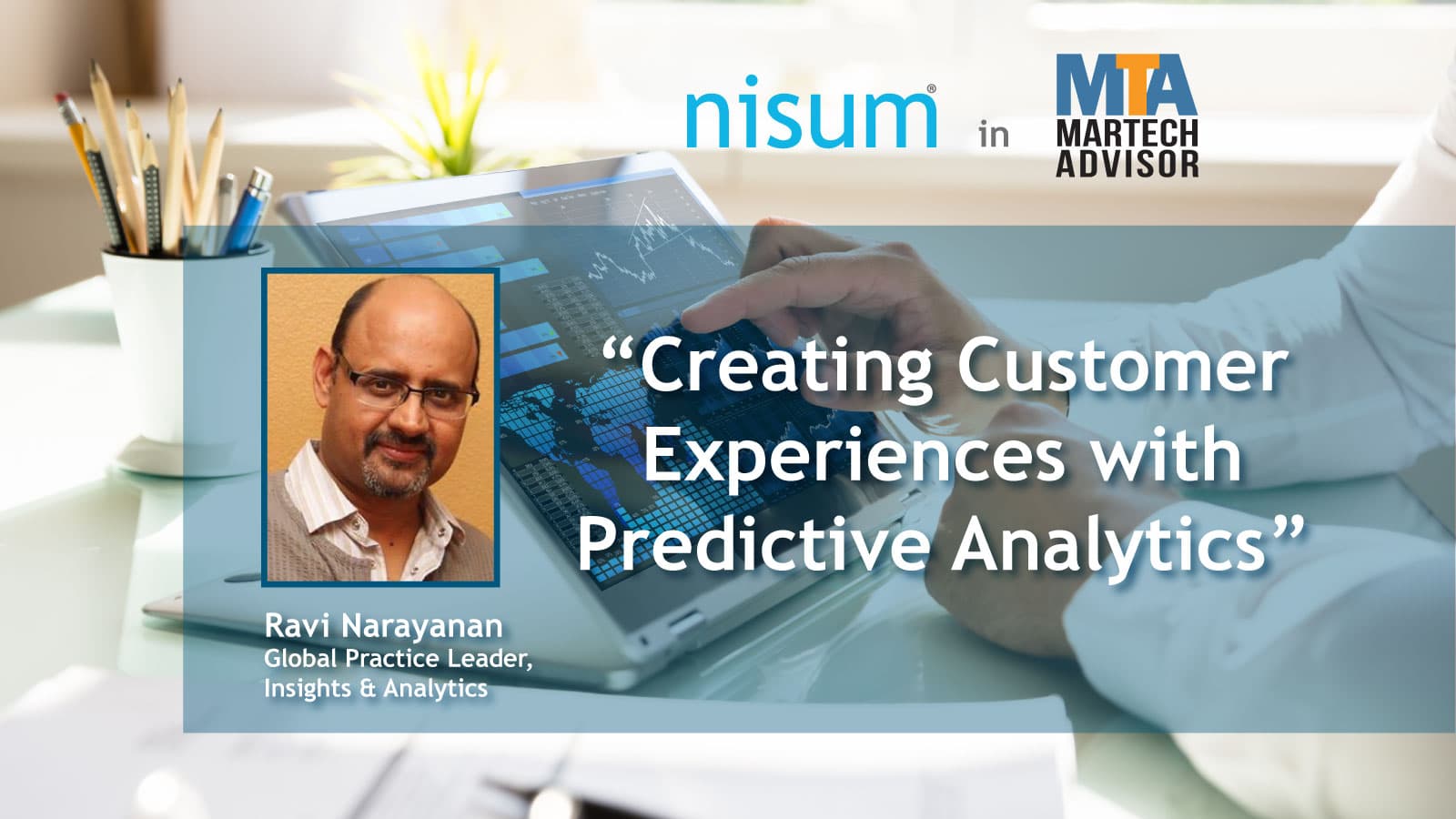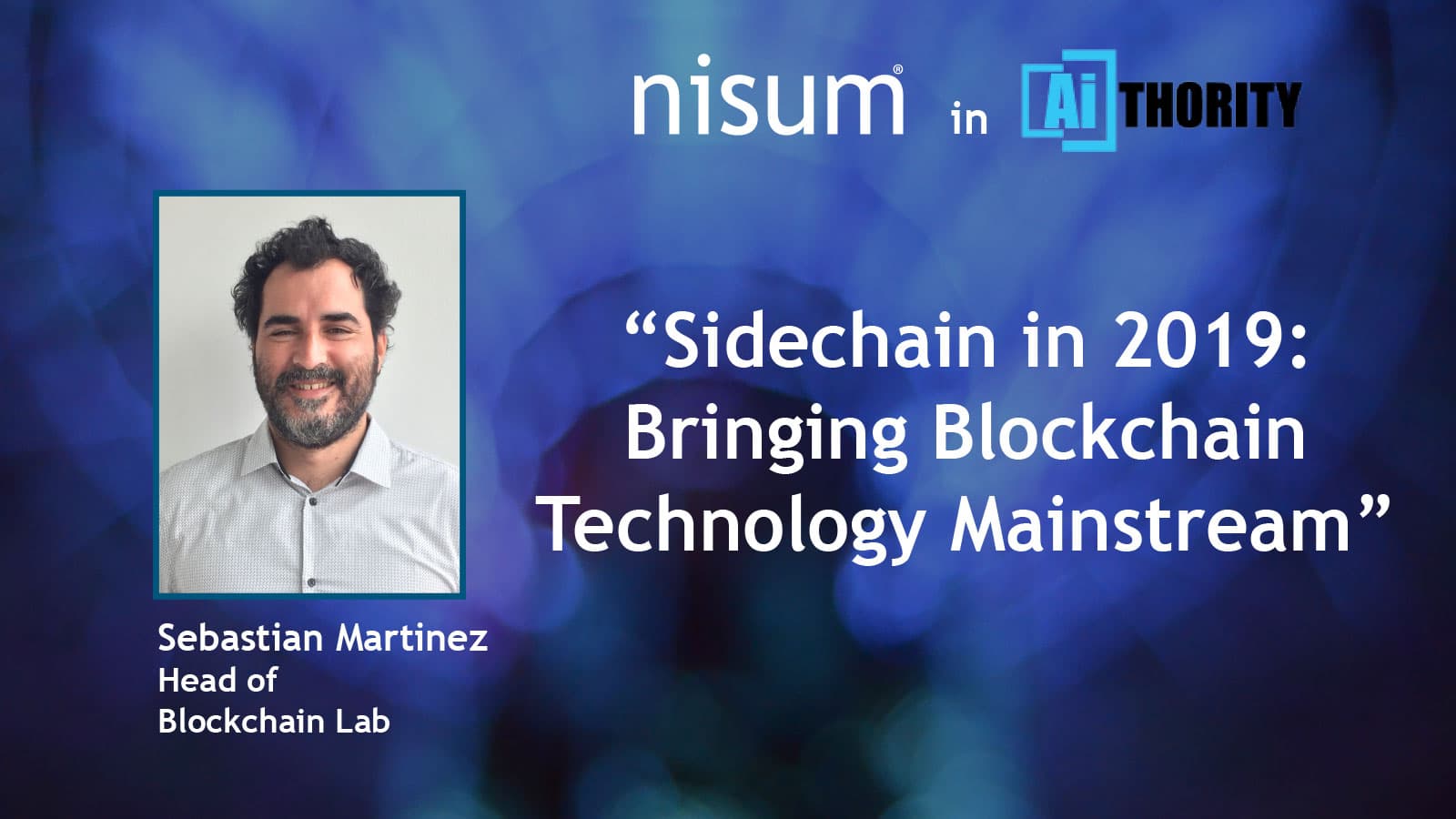Nisum’s Global Practice Head of Insights and Analytics, Ravi Narayanan, discusses ways AI and predictive analytics can be utilized to create meaningful connections with consumers and improve customer experiences in his article published by the MarTech Advisor. Read the text below or see the full article here.

Creating Customer Experiences with Predictive Analytics
As brands seek to cultivate more relevant and meaningful connections with consumers, predictive analytics will allow marketers to create a customer experience completely tailored to each individual’s distinct preferences and needs, shares Ravi Narayanan, Global Practice Head of Insights and Analytics, Nisum.
Predictive analytics has given way to a new data economy. The idea of computerized decision-making, however, is far from new. The term “artificial intelligence” was first introduced at a conference at Dartmouth College in 1956, and since then, we have seen the manifestations of computerized decision-making in our lives to varying degrees of sophistication.
Even before Nest, homeowners could manually set timers in their homes for different lights to turn on and off at different times while they were on vacation, or set their thermostats to automatically lower the temperature five degrees overnight. IBM’s Deep Blue chess machine defeated then world chess champion, Garry Kasparov, in 1997 -- a full 13 years before Watson was introduced. Even Furby, the robotic pet toy that was a must-have for children of the late 90s, was one of the first successful ventures in introducing AI to the home.
The current inflection point comes as massive-scale predictive analytics becomes a reality, and the implications of this are both far and wide-reaching. Think healthcare and medicine, military, markets, travel, and beyond.
For marketers too, the promise of being able to predict consumer behavior is massive.
On the backend, predictive data can streamline the supply chain; automatically triggering reorders, knowing which retail locations require which inventory at certain times, etc. But, as I think many CMOs would agree, even the most well-oiled backend machine means nothing if consumers have a less than optimal experience when interacting with your brand.
This is true across both B2B and B2C enterprises. Consumers have come to expect easy, instant gratification in all aspects of their lives, be it in the form of Uber, Amazon, Seamless, Instagram, etc., and will expect similar experiences with all brands they interact with, or simply take their business elsewhere.
Let’s look, then, at some of the ways in which predictive analytics can be used to improve the customer experience. While there is no silver bullet, some of the most impactful tactics fall under the broad category of creating a frictionless experience for the customer.
Another example lies in suggesting new products to customers based on their purchasing habits. Amazon is an easy example of this. Each of the products Amazon suggests to users are either bought by customers with similar purchasing habits or purchased along with the product a user is currently looking at.
A bit more of a sophisticated application, predictive analytics can also be used to create an immersive experience and deliver instant gratification for customers. Brands like Spotify and Netflix are doing this now, by changing their suggestions based on what users are watching/listening to at the moment.
No matter the application, predictive analytics play a critical role in delivering a comprehensive view of the consumer to provide these types of experiences. Additionally, understanding both the "in-context" and extended customer lifetime value is key. Having a clear picture of when a customer will be loyal for a long period of time, versus a one-time customer, is key because companies can then target the more valuable customer.
Of course, as smart companies are figuring out, brands must use predictive analytics as “butlers” not “stalkers.” Not considering the real-life implications of the power of accurate analytics can be a fatal mistake. For example, Target’s analytics models predicted a teen’s pregnancy and sent her direct mail promotions and coupons for baby-related items, before she had told her parents.
Practitioners must also be wary of any incorrect assumptions or biases built into predictive decisions. For example, if an underwriting program is biased against certain users, thousands of applicants may not be able to access credit or receive loans. The software can also be quick to discard outliers that seem irrelevant, but actually, provide valuable insight.
While we have indeed reached a critical juncture in the power of predictive analytics, models are still only as smart as they are trained to be. For the time being, humans are still a critical part of the equation to understanding and predicting behavior, and in turn, optimally deploying predictive analytics to enhance the customer experience.



